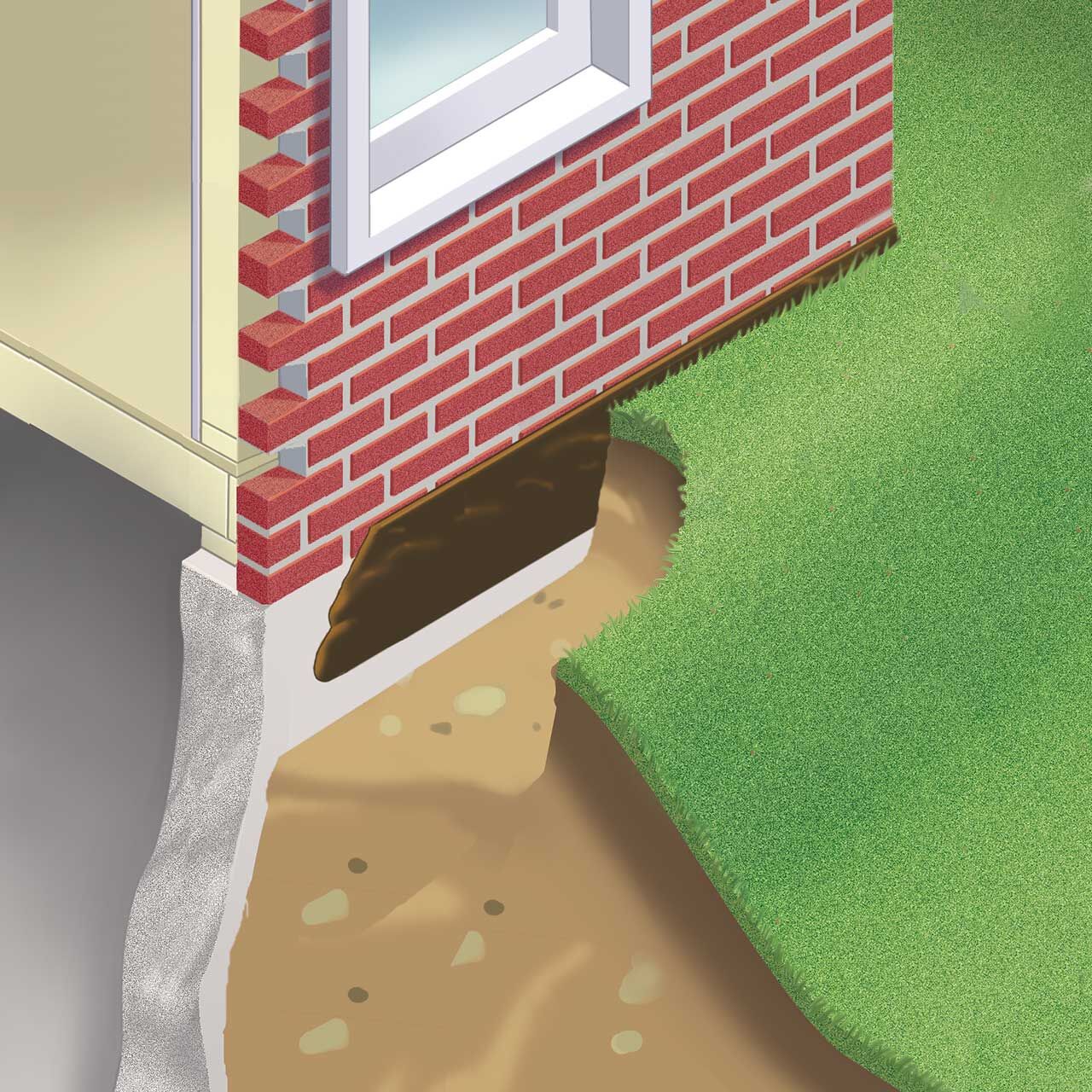Problem:
Grading Problems
When a building is first constructed, the top of the foundation should extend at least a few inches above the ground level. Over time, as homeowners raise the surrounding landscape and add hard surfaces such as concrete or asphalt, water may begin to seep through the brickwork and over the top of the foundation wall. The problem can also occur if your building is situated in a low-lying area or if a neighboring property is sloped toward you, as both situations would allow water to accumulate alongside your building.
Our Basement Advisor will most likely recommend correcting the problem from the exterior. The process entails digging a trench below the top of the foundation wall(s) and applying a waterproof membrane over the joint where the structure sits atop the foundation.
Solution:
Exterior Waterproofing Membranes
U.S. Waterproofing is a comprehensive, full service waterproofing company. What we mean by that is we don’t believe in a one-size-fits-all solution. In many situations, we have found that exterior waterproofing is the most effective solution as it stops water filtration right at source of the problem.
What are Exterior Waterproofing Membranes?
An Exterior Waterproofing Membrane is a waterproof barrier applied below ground and to the outside of the foundation. This is sometimes done with solid sheets to prevent water from entering, but sheets create seams, and those seams cause leaks over time that let water into your home. Instead, we use a flexible, seamless, polyurethane liquid membrane that is applied with a hand trowel. Once the material cures (dries), it provides a seamless coating that doesn’t leak and is impenetrable to water.
When would Exterior Waterproofing Membranes be used?
It’s sometimes impractical or undesirable to waterproof a basement from the interior. Below are reasons for Exterior Waterproofing Membranes:
- Seepage over the top of the foundation — if the dirt or paving level reaches above the top of the foundation wall, it may allow water to seep into your home through the joint where your house sits atop the foundation
- Honeycombed concrete — Honeycombed concrete can form as soon as the foundation is constructed and usually exists because the concrete was mixed and consolidated poorly, leaving areas of the foundation wall that is jagged, coarse, and stony. These porous areas are common areas for water intrusion
- Masonry foundations — when a home has a brick or stone foundation—often the case in older homes — the mortar holding these walls together erodes due to water and can crack over time. An Exterior Waterproofing Membrane is the preferred method as interior waterproofing only traps the water and does nothing to prevent further deterioration of the wall
- Preserving the basement and its many functions — a finished basement is often used by the whole family, be it kids playing down there or adults enjoying a home theater or a bar. Exterior Waterproofing Membranes doesn’t require paneling / drywall removal, or other construction inconveniences, which means your basement stays intact and undisturbed
How does Exterior Waterproofing work?
When excessive rain soaks into the soil, it creates waterproofing problems. The process of attacking the root of the issue starts with digging a trench outside the foundation, which is usually done by hand to minimize disruptions to landscaping and other areas around your home. We then apply a heavy-duty membrane coating that covers the foundation wall. Once that protective coating dries, a seamless barrier is formed to keep water out. Lastly, we backfill the trench with the excavated soil.
When would Exterior Waterproofing not be the best solution?
Sometimes, there are obstructions on the exterior that are either too costly or impractical to move. Examples include decks, additions or attached garages. We also need enough space to dig a trench and temporarily store the excavated earth. Lastly, if water is seeping through cracks in your basement floor, an Interior Drain Tile System might be the better solution.
If you think your house might benefit from exterior waterproofing, or would like further guidance, schedule your free consultation online today.







